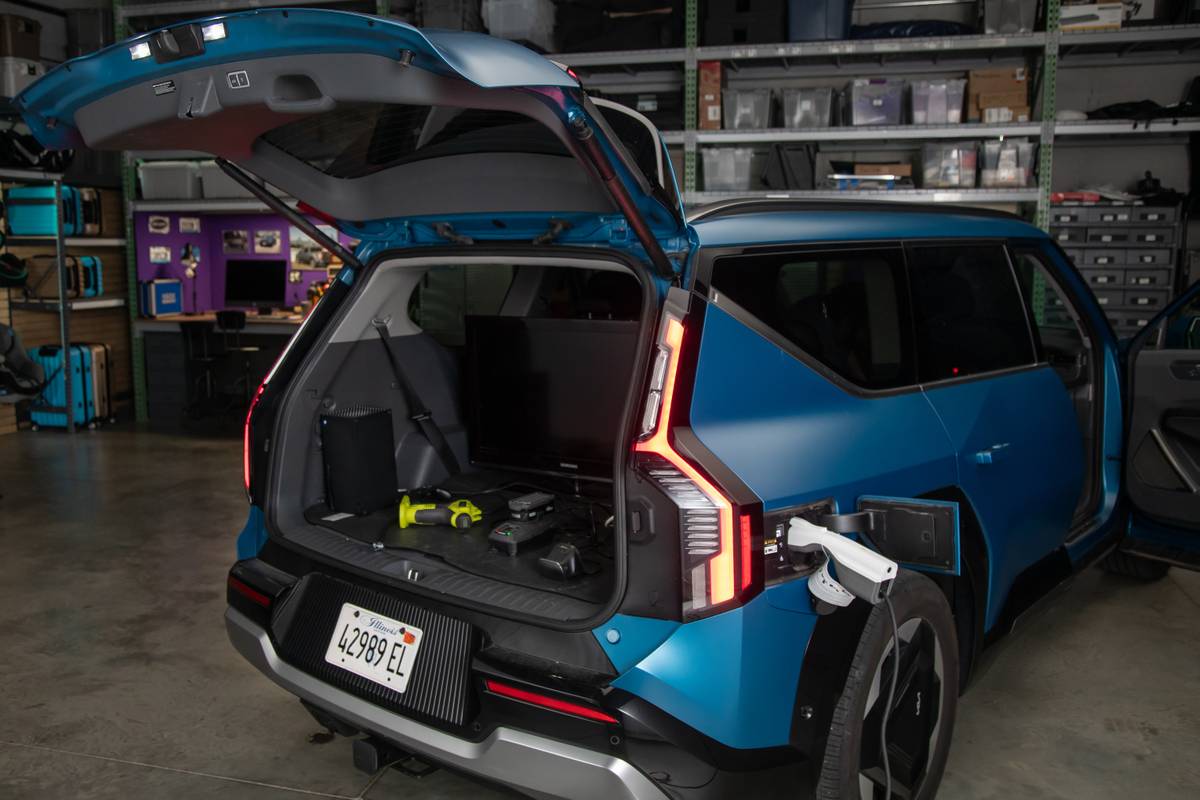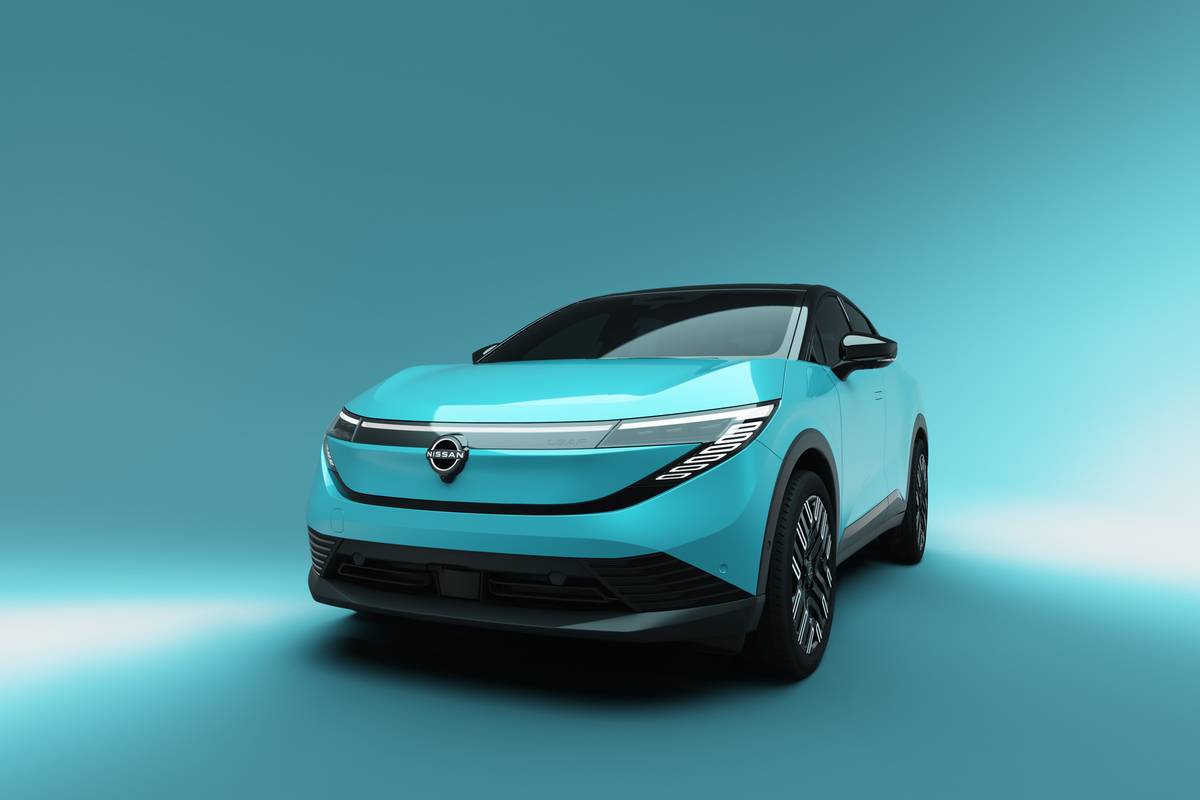chicagotribune.com's view
What’s not to love about the 2003 Toyota Matrix arriving at dealerships? Finally another choice other than Subaru for those who want the security of all-wheel-drive without having to opt for a sport-utility vehicle.
And an AWD vehicle that rides and handles like a car and boasts the fuel economy of a car with the storage capacity of a sport-ute.
But most important, like most Subarus, a car with AWD that’s priced for the masses and not just the blessed few who can afford an Audi or Mercedes-Benz (though even a top-of-the-line Subaru Outback approaches Mercedes wannabe status in starting at just under $32,000).
Unfortunately, the AWD machine that rides and handles like a car, gets the mileage of a car and doesn’t cost as much as a couple bricks of gold like luxury AWD cars, looks more like a small station wagon than a sedan. If beauty is in the eye of the beholder, those who marvel at Matrix design better check for cataracts. Toyota calls Matrix a “crossover utility,” or CUV, that resulted from “listening to the wants and needs of young new-car buyers.”
In other words, Toyota is saying that if it looks like a duck, it’s really a pheasant. Folks, this is a station wagon. The tall roof line extends back to the taillamps, a feature you don’t find on sedans.
But Toyota is hell-bent on getting younger folks into its cars because young, lower-income buyers who are satisfied with their first purchase become older, affluent consumers who will buy all the rest of their vehicles from you. And that bodes well for Camry, Avalon and even Sequoia, where the big profits are.
But young folks don’t buy wagons, they buy vehicles with “utility” in the name. So Matrix is a CUV. Toyota says Matrix has the styling of a sports car, the functionality of a sport-ute and the affordability of a subcompact. Yes to all claims except the one about styling of a sports car, unless it backed into the wall at Daytona.
Matrix is the new-from-the-ground-up four-door hatchback that sprung from the alliance between Toyota and General Motors, which calls its version the Pontiac Vibe. Toyota and GM had built the Toyota Corolla and Chevrolet Prizm at their joint-venture plant in Fremont, Calif. Now production has been turned over to Corolla and the Vibe (Prizm has been discontinued). Matrix is produced at a plant in Cambridge, Ontario, that builds the Corolla and Solara coupe/convertible.
Matrix is offered with front- or all-wheel-drive in base and XR versions and the high-performance XRS with FWD only. Base and XR come with the 1.8-liter 4-cylinder borrowed from Corolla that develops 130 horsepower with FWD drive, 123 h.p. with AWD. You can opt for a 5-speed manual or 4-speed automatic with FWD, an automatic only with AWD. The XRS comes with a 180-h.p. version of the 1.8-liter, same as offered in the Celica sports coupe, and is teamed with 6-speed manual or 4-speed automatic.
We tested the XR with automatic and AWD, one of those on-deman d systems that means you operate in front-wheel-drive until wheel slippage is detected and then the system goes to work without having to twist a dial or push a button. It also means there’s no AWD “lo” mode for deep sand or steep hills. While the 1.8-liter 4 sacrifices some horsepower with AWD and tends to growl at takeoff, the 26 m.p.g. city/31 m.p.g. highway mileage rating with automatic helps take some of the sting out of the vagaries of fuel prices, and AWD provides the assurance of more stable Snow Belt motoring.
However, the fuel tank holds 13.2 gallons in FWD models, 11.9 gallons in AWD, whose added hardware slims tank size.
The base Matrix with FWD and a 5-speed manual is rated at 30 m.p.g. city/35 m.p.g. highway, 28/33 with automatic. And it starts at $14,670.
If high mileage and all-wheel-drive security are your goals, the 123-h.p. version of the 1.8-liter 4 is more than adequate. Leave the stopwatch at home. It won’t leap from lights or zip down merger lan s ahead of the pack. Function if not stunning form. There and back with minimum investment in fuel–not to mention minimum investment to acquire.
f leaping and zipping are your goals, opt for the XRS with its 180-h.p. powerplant.
Though Toyota says Matrix has the styling of a sports car, it acts like an economy model in terms of soft ride, a tendency to exaggerate irregular road surfaces and to lean in corners and turns, when the soft, cushy cloth seats could use larger side bolsters to better keep your body in place.
Matrix, as noted, is a five-passenger hatchback, which executives throughout the auto industry insist is the body style of choice of the coveted youth market. A hatch allows youth to quickly flip their gear and stuff in back and retrieve it once they arrive at their destination. No enclosed trunk but a really big cargo hold for the gear and stuff. And the Matrix rear seat back folds flat as does the front passenger seat back for those who carry even more gear and stuff.
Noteworthy features include ample stowage under the center armrest, in the dash and in the doors; convenient shift lever low in the dash; and two power plugs for such items as computer or cellphone plus a 115-volt socket in the dash to plug in whatever you want to carry that comes with an electrical cord. Some drawbacks, however, are that while long and tall with fantastic head room in either row of seats, Matrix is a tad narrow and better fits punters than linemen; and it comes with a rear hatch window cluttered by the visible open/close struts, rear window wiper hardware and rear brake light. Rear-seat headrests block rear vision even more.
Toyota expects to produce 75,000 Matrixes annually. They’ll be gobbled up. Expect high demand, short supply and dealers demanding full sticker if not a premium.
Base price of the vehicle tested was $18,445, rather reasonable considering it comes with all-wheel-drive, automatic transmission, air conditioning, power windows/door locks/mirrors, vertical driver’s seat adjuster (manual seats), rear-window wiper/defogger, halogen headlamps, daytime running lamps, anti-lock brakes (standard AWD, optional FWD), front and rear stabilizer bars, double wishbone suspension, 16-inch radial tires (17-inch optional on XR and XRS), rear cargo nets/tie-down hooks, split/folding rear seat back, color-keyed front/rear bumpers, intermittent wipers, tinted glass, keyless entry and AM/FM/CD player with four speakers. Our test car added side-impact air bags for driver/front-seat passenger at $250 and upgraded sound system with a six-disc CD player and six speakers at $240, and optimized the appearance with aluminum alloy wheels at $410 and fog lights/driving lamps plus front and rear spoilers at $270. The test car didn’t have one, but a power sunroof is a $750 option on the XR and XRS.
If you minimize the options, which would be easy to do, you end up with an AWD, high-mileage hatchback for less than $20,000 wi th the Toyota reputation for quality, durability, dependability and reliability–though being new, Matrix will have to earn those honors in the next several months.
Latest news



